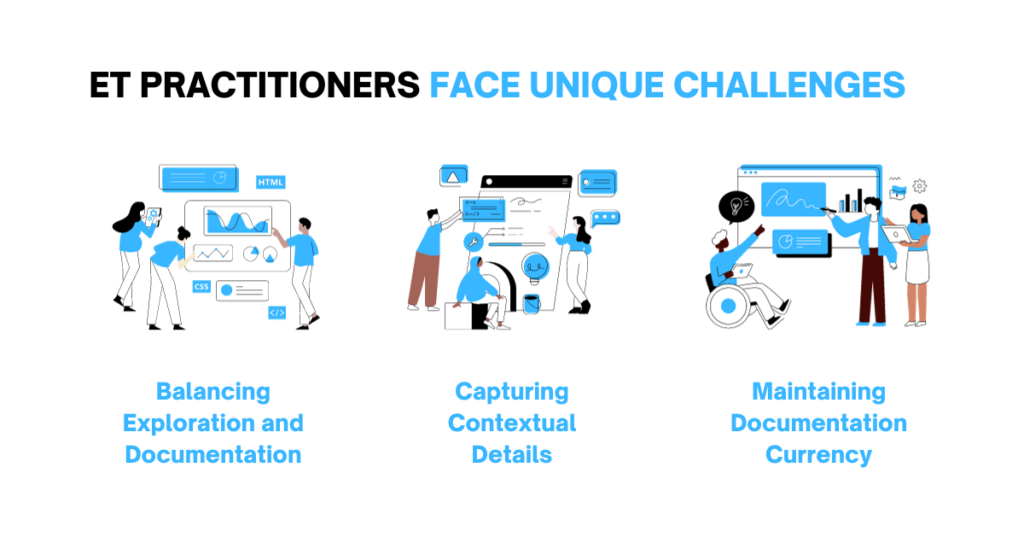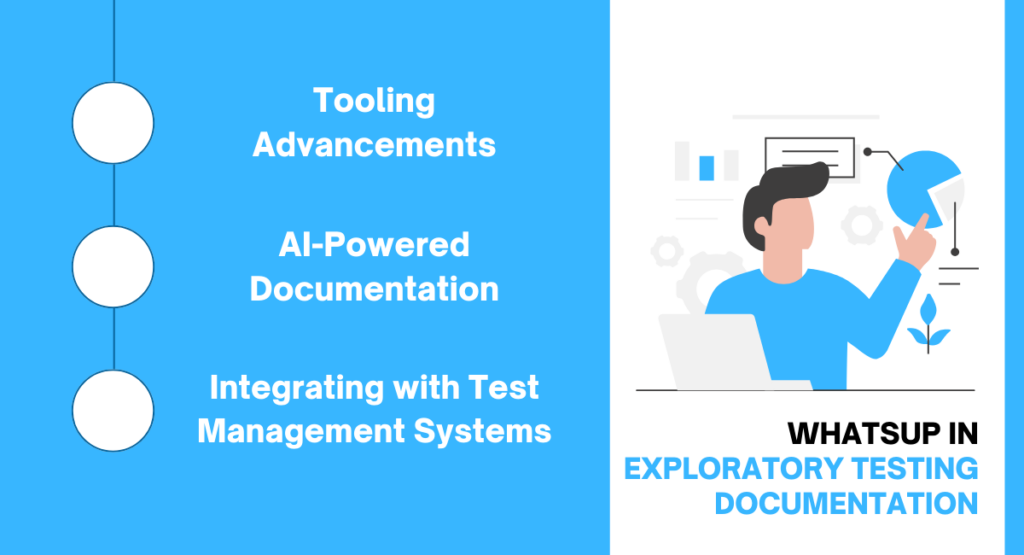Exploratory testing (ET) has emerged as a popular testing methodology, valued for its flexibility, adaptability, and ability to uncover hidden defects.
However, Exploratory Testing practitioners often face a documentation dilemma: how to capture the valuable insights and findings from their testing sessions without compromising the exploratory nature of the approach.
The Value of Documentation

Documentation plays a crucial role in any testing methodology, and Exploratory Testing is no exception. Effective documentation serves several important purposes:
Knowledge Sharing:
It allows testers to share their learnings and insights with others, fostering a collaborative environment and preventing duplication of effort.
Test Reusability:
It enables testers to reuse previously discovered test cases and scenarios, enhancing testing efficiency and effectiveness.
Traceability:
It provides a record of testing activities, ensuring traceability between defects and the testing sessions that uncovered them.
Continuous Improvement:
It facilitates continuous improvement of testing practices by providing a historical record of testing strategies, techniques, and outcomes.
ET Practitioners Face Unique Challenges

Despite the recognized benefits of documentation, Exploratory Testing practitioners face unique challenges in capturing their testing activities:
Balancing Exploration and Documentation:
The very nature of ET, with its focus on ad-hoc exploration and improvisation, can make it difficult to simultaneously document testing steps and observations.
Capturing Contextual Details:
Exploratory Testing often involves uncovering subtle nuances and unexpected behaviors that may be challenging to capture in written form.
Maintaining Documentation Currency:
The dynamic nature of Exploratory Testing can lead to documentation that quickly becomes outdated as the application under test evolves.
The Right Balance

To strike the right balance between exploration and documentation, ET practitioners can adopt several strategies:
Focus on Key Findings:
Prioritize documenting significant findings, observations, and defects rather than every minute step of the testing process.
Leverage Light Documentation Techniques:
Utilize lightweight documentation methods, such as mind maps, screenshots, and issue tracking tools, to capture key information without getting bogged down in lengthy narratives.
Integrate Documentation into the Testing Process:
Incorporate documentation activities into the testing workflow, such as taking brief notes during testing sessions and summarizing findings at the end of each session.
Utilize Collaborative Documentation Tools:
Employ collaborative documentation tools that allow testers to share and update documentation in real-time, fostering knowledge sharing and ensuring up-to-date information.
Whatsup in Exploratory Testing Documentation

The landscape of Exploratory Testing documentation is evolving with the adoption of new technologies and practices:
Tooling Advancements:
The emergence of dedicated ET tools is providing testers with enhanced capabilities for capturing, organizing, and sharing testing insights.
AI-Powered Documentation:
Artificial intelligence (AI) is being explored for automating documentation tasks, such as summarizing testing sessions and generating defect reports.
Integrating with Test Management Systems:
ET documentation is being integrated with test management systems, enabling seamless tracking of defects and linking them to specific testing activities.
Book a Demo and experience ContextQA testing tool in action with a complimentary, no-obligation session tailored to your business needs.
Striking the Right Balance
Experts in the field of ET emphasize the importance of striking a balance between exploration and documentation. James Bach, a leading software testing expert, suggests that documentation should be seen as a tool to support the testing process, not a constraint on the exploratory nature of ET.
By adopting lightweight documentation techniques, leveraging technology, and integrating documentation into the testing process, ET practitioners can capture valuable insights without compromising the exploratory nature of the approach.
Effective documentation ensures that the knowledge and learnings gained through ET are shared, reused, and applied to continuous improvement initiatives, ultimately contributing to the delivery of high-quality software.
You may also be interested in: Continuous Integration Script Runner’s Role in Streamlining Software Development
